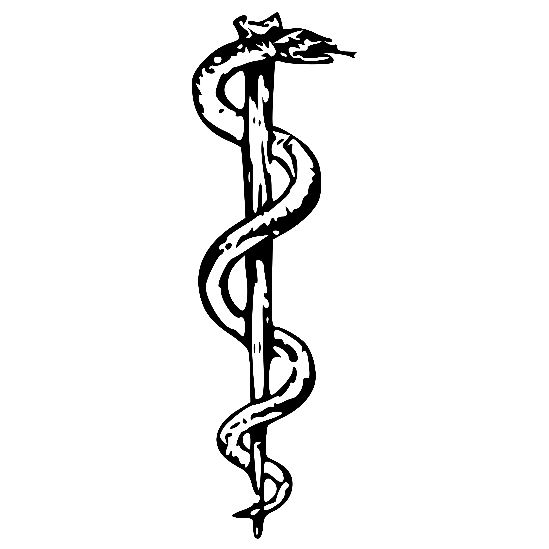
Only 6% of doctors knew the real symbol of medicine, “Staff of Asclepius”
A common misconception of the caduceus as the symbol of medicine, instead of the staff of Asclepius, has entwined itself into minds of many as it is used relatively more commonly, especially in the US.
The twin serpent, winged staff – Caduceus
The caduceus is the staff of Greek God Hermes. It is winged with two serpents coiling around it. It represents Hermes (or the Roman Mercury), the messenger of the gods, guide of the dead and protector of merchants, shepherds, gamblers, liars, and thieves.
By extension, the caduceus is also a recognized symbol of commerce and negotiation, two realms in which balanced exchange and reciprocity are recognized as ideals.
“The myths around this staff are many but none point towards medicine.”
The true symbol of medicine – Staff of Asclepius
Asclepius is the deity associated with healing and medicinal arts in Greek mythology. He is the son of Apollo, the physician. He became so proficient in healing that he surpassed his father and was believed to be able to evade death and to bring others back to life from the brink of death and beyond.
In Greek mythology snakes were considered sacred. There are many theories for the why the snake is part of the symbol.
“The snake that’s wrapped around the rod may symbolize rejuvenation, because snakes shed their skin, or it could simply represent the healing of snakebites.”
The staff too has many interpretations. A well known one is very directly related to medicine.
“It could be a reference to a traditional treatment of a parasitic nematode called Dracunculus medinensis or Guinea worm, in which, doctors would cut a slit in the skin right in its path and, when it poked its head from the wound, take a small stick and slowly wrap the worm around it until it was fully removed. The infection is relatively rare today, but the same extraction method is still used.”
Erroneous Usage
The erroneous usage of the caduceus as the symbol of medicine was popularized by a mistake in 1902 when the US Army Medical Corps adopted it as their insignia. To date, many commercial healthcare organizations use the symbol in US.
An Indian study published in the Journal of Clinical and Diagnostic Research, 2014 found that –
- Only 6% of doctors were aware that the Rod of Asclepius is the true symbol of healing.
- Of the colleges listed in the ‘India Today 2013 top 10 medical colleges list’,
- Six had emblems/logos based on or a variation of the caduceus.
- Three had unique emblem/logos not featuring a serpent and not based either on the caduceus or the rod of Asclepius
- Only one college, had a single entwined serpent in its emblem based on the rod of Asclepius
- None of the largest corporate hospital chains in the country featured the rod of Asclepius or the caduceus in their logo. This is in contrast to the United States where most commercial and corporate hospitals feature the caduceus prominently in their logo.
- Among the specialty associations looked into, four associations- Association of Physicians of India, Association of Otolaryngologists of India, Indian Society of Anesthesiologists and the Indian Association of Dermatologists, Venereologists and Leprologists had logos similar to the caduceus.
- Even the Indian Medical Association, the parent body of all doctors features a variant of the caduceus as its logo.
- The Medical Council of India and the World Health Organization however feature the Rod of Asclepius in their logo.
The study concluded that
“…awareness of the rod of Asclepius is poor. Many academic institutions and doctors associations have a logo based on the caduceus. The appropriateness and suitability of any alternate symbols have to be decided by eminent professionals and doyens of the academic arena.”
Neuroglia Health Private Limited.




Very Shameful… they don’t even know about their logo… which they are sticking behind cars! Hahah
Logo is nice